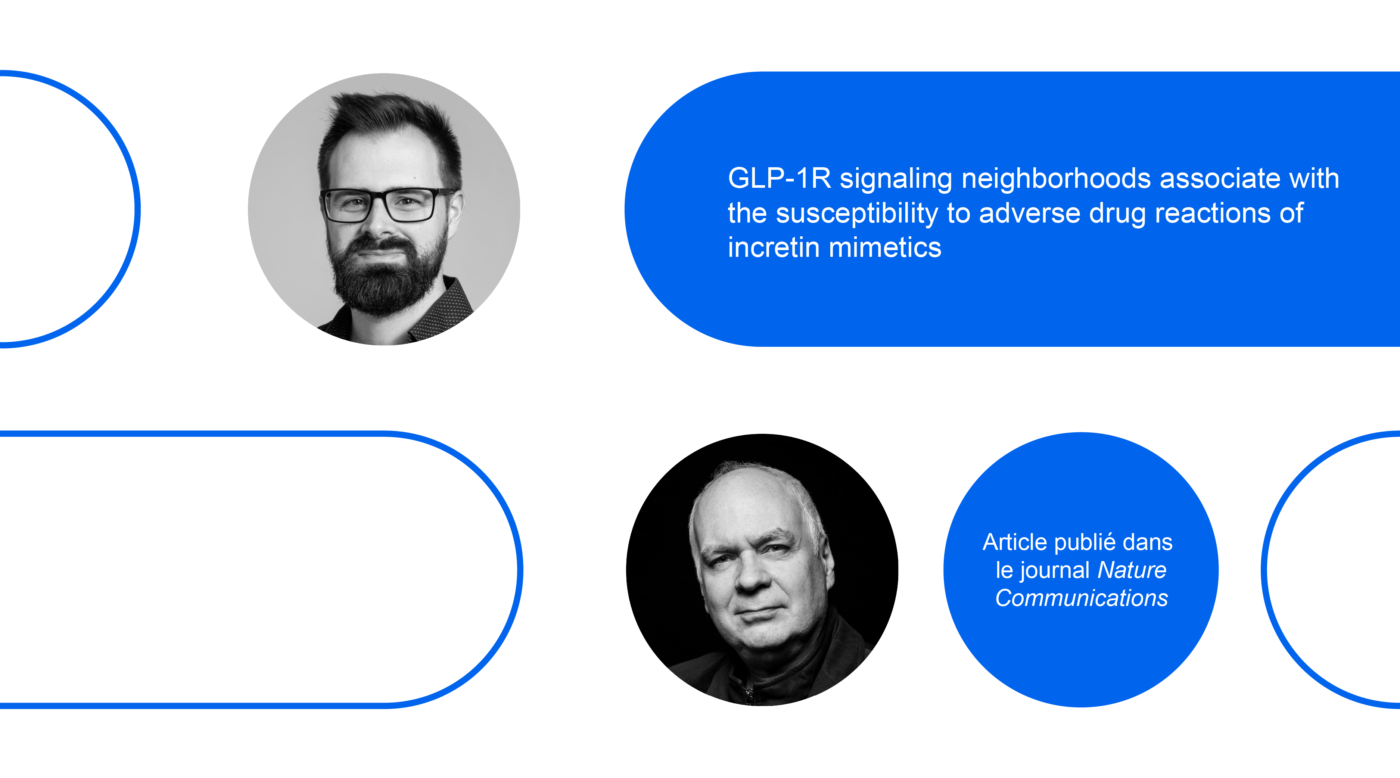News
A new platform to predict the safety of drug compounds
Published on October 30, 2023
With their ability to activate multiple signaling pathways at different locations in the cell, G protein-coupled receptors (GPCRs) are prime targets for drug development. Shane C. Wright, from the Karolinska Institute in Sweden, has managed to harness new technology developed during his time as a postdoctoral fellow in the laboratory of Michel Bouvier, CEO of IRIC and Director of its Molecular Pharmacology Research Unit, that can potentially be used to predict adverse effects of new treatments prior to their use in the clinic. The study, a joint effort by the Swedish and Montreal teams, has been published in the journal Nature Communications.
Biosensors with subcellular resolution
To study the location bias of GPCRs, the Bouvier laboratory has developed a biosensor platform that measures the activation of 15 signaling pathways at 4 distinct locations in the cell: plasma membrane, endosomes, Golgi apparatus and endoplasmic reticulum. The team used this platform to study the Glucagon-Like Peptide-1 Receptor (GLP-1R), which is targeted for the treatment of obesity and type II diabetes by several clinical and preclinical compounds. The results obtained revealed pathway localization and activation signatures for each compound tested.
Predicting adverse effects by studying “signaling neighbourhoods”
By integrating signaling activation and localization information, the team was able to reveal important differences in cellular responses to the GLP-1R-targeting compounds tested. The signaling signatures obtained correlated with adverse drug reactions reported by the FDA (Food and Drug Administration). The team therefore proposes to use the platform to measure the efficacy and potency of given compounds in different subcellular compartments, or signaling neighbourhoods.
The researchers predict that their platform will become a very useful tool for studying subcellular GPCR signaling, and will influence drug discovery programs by providing answers about location bias and the impact on compound safety.
Cited study
Wright SC, Motso A, Koutsilieri S, Beusch CM, Sabatier P, Berghella A, Blondel-Tepaz É, Mangenot K, Pittarokoilis I, Sismanoglou DC, Le Gouill C, Olsen JV, Zubarev RA, Lambert NA, Hauser AS, Bouvier M, Lauschke VM. Nature Communications, online 9 October 2023, doi: 10.1038/s41467-023-41893-4.
